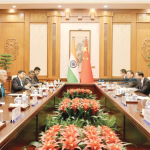After China abandoned its restrictive “zero Covid” policy about two weeks ago, regional numbers of infected persons with coronavirus point to explosive outbreaks and overstretched healthcare systems, writes Chang Che, Asia technology correspondent for The New York Times (NYT).
However, the intensity and magnitude of the country’s first nationwide outbreak have remained largely a mystery as official figures from the central government remain low. The government has a narrow definition of which deaths should count as caused by Covid. Anecdotal evidence, like social media postings of hospital morgues overcrowded with body bags, is quickly taken down by censors.
Now, a picture is emerging of the virus spreading like wildfire. One province and three cities have reported Covid estimates far exceeding official tallies in recent days, said Chang.
At a news conference on Sunday, an official in Zhejiang Province, home to 65 million people, estimated that daily Covid cases there had exceeded one million.
In the eastern city of Qingdao, population 10 million, a health minister said on Friday that there were roughly half a million new cases each day, a number he expected would rise sharply in the coming days, local news sites reported.
In Dongguan, a city of seven million in central Guangdong Province, a city health commission report on Friday estimated between 250,000 and 300,000 new cases daily.
And in northwestern Shaanxi Province, officials in Yulin, a city of roughly 3.6 million people, logged 157,000 infected on Friday, with models estimating that more than a third of the city’s population had already been infected, according to local media.
These numbers contrast sharply with those from China’s national health commission, which on Friday reported about 4,000 Covid cases for the entire country, reported NYT.
It’s also a contrast with the picture the ruling Communist Party has presented since its abrupt about-face on Covid policy in early December.
Health experts and state media outlets have downplayed Covid’s severity, focusing on stories of recovery rather than of severe illness. The result has been a one-sided presentation of an outbreak that some experts believe could cause over a million deaths in the coming few months, said Chang.
Notably, the Communist Party has cast aside restrictive “zero Covid” policy, which set off mass protests that were a rare challenge to the Communist leadership.
Meanwhile, there is a shortage of medicine, as Covid rips through parts of China, millions are struggling to find treatment — from the most basic cold remedies to take at home to more powerful antivirals for patients in hospitals.
Gripped with grief and anxiety, many in China want a national reckoning over the hard-line Covid policy. Holding the government accountable may be a quixotic quest, reported NYT.
Despite Beijing’s assurances that the situation is under control, data on infections has become more opaque amid loosened pandemic constraints. As Covid sweeps across the Chinese capital, Beijing looks like a city in the throes of a lockdown — this time, self-imposed by residents.
China has acknowledged only seven deaths from Covid in the past two weeks and a few thousand new cases daily, which health experts call a vast to undercount.
On Sunday, China’s national health commission announced without explanation that it would no longer provide daily Covid data. The Chinese Center for Disease Control will provide that information, the commission said, without specifying how often, reported NYT.
Karen Grepin, a public health expert at the University of Hong Kong, estimates that China could be facing tens of millions of new cases a day, based on estimates extrapolated from Hong Kong’s own outbreak this year.
Hospitals and healthcare workers are facing “never-before-seen challenges,” according to the report from the Dongguan health commission.
It said that last week more than 2,500 of the city’s health workers went to work with either confirmed Covid infections or high fevers. At one Dongguan hospital, roughly half of the 3,000 health workers had been infected, according to the report.
Qian Jun, deputy director of Dongguan’s health center, described the overloaded healthcare system as “a tragic situation.”
In Qingdao, makeshift medical sites were rationing health packages consisting of 10 ibuprofen tablets and two rapid antigen tests per person, according to local news media reports.
Even Hu Xijin, the former editor of the Communist Party paper Global Times, criticized the official numbers. In a WeChat blog posted on Saturday, he commended the bold reporting from Qingdao, contrasting it with official case counts that “deviated widely from the experiences of the public.”
Such metrics are leading to an “erosion of credibility in official statistics,” he wrote.
At least two Chinese pharmaceutical companies told The New York Times that the authorities had seized their supplies of ibuprofen and acetaminophen, preventing them from supplying their usual customers. (ANI)








